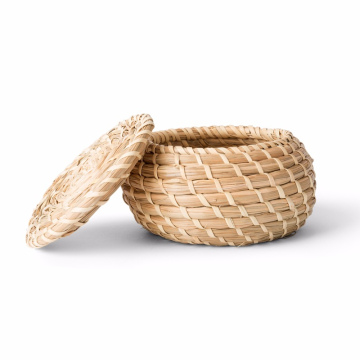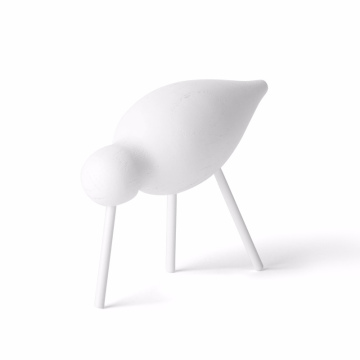Origins of Onsen Tamago: A Tradition Rooted in Japanese Hot Springs
Onsen Tamago (温泉卵), or hot spring eggs, is a dish deeply embedded in Japan's culinary tradition. Originating from the country’s famed hot springs (onsen), onsen tamago is characterized by gently cooked eggs that are silky and custard-like in texture, offering a delicate balance of flavors. The slow cooking method, which simulates the natural geothermal heat of hot springs, produces an egg with smooth whites and a runny, creamy yolk, making it a truly unique Japanese delicacy.
The Rich History of Onsen Tamago
The history of onsen tamago dates back to the Edo period (1603–1868), when Japan began to see the development of onsen culture. Onsen, or hot springs, are a significant part of Japanese culture, with many natural hot spring resorts (known as onsen towns) dotted across the country, particularly in regions like Hakone, Beppu, and Ibusuki. These onsen were used not only for relaxation and health benefits but also for cooking food.
The practice of cooking eggs in hot spring water started as a practical and natural way to prepare eggs. The geothermal heat of the onsen water, usually between 60–80°C (140–176°F), was perfect for gentle, slow cooking. By immersing eggs in the water for about 20-30 minutes, the result was a soft-cooked egg with a creamy, runny yolk and a delicate white, much different from the more traditional boiled egg with a firmer texture. The slow, controlled temperature of the onsen allowed the egg to cook evenly without becoming overdone or tough.
This technique of cooking eggs in natural hot springs gave birth to the dish onsen tamago, named after the onsen that provided the heat for cooking. Over time, the dish became a regional specialty in onsen towns, often served as part of a kaiseki (traditional multi-course Japanese meal) or as a simple, comforting snack.
The Cooking Method: Gentle and Precise Heat
The cooking method for onsen tamago is what makes it unique and a true delicacy. Unlike hard-boiled eggs or even soft-boiled eggs, which rely on higher temperatures, onsen tamago is cooked at a much lower temperature for a longer period of time. The gentle, slow cooking process produces a unique texture:
- The Whites: The egg whites are soft and delicate, with a silken texture that contrasts beautifully with the rich yolk. The whites should not be runny, but instead set into a creamy, delicate consistency.
- The Yolk: The yolk of an onsen tamago is cooked just enough to remain soft and runny, with a smooth, custard-like quality that melts in your mouth. The viscosity of the yolk is one of the key elements that makes this dish so unique and pleasurable to eat.
The process of cooking onsen tamago typically involves placing the eggs into water heated to around 70°C (158°F) and allowing them to gently steam for 20–30 minutes. Modern versions of this method sometimes use a water bath or a precise sous-vide technique to replicate the low-and-slow heat of an onsen.
Cultural Significance and Regional Popularity
Onsen tamago has deep cultural roots in Japan, closely tied to the onsen bathing culture. It is considered a nourishing and comforting food, often enjoyed by those visiting hot spring resorts as a form of relaxation. In addition to being served in onsen towns, it has also become a popular accompaniment in many traditional Japanese dishes.
- Kaiseki Cuisine: In kaiseki (traditional multi-course meals), onsen tamago may be served as part of a course, paired with seasonal ingredients such as broth, seaweed, or vegetables, allowing the silky texture of the egg to complement the delicacy of the other ingredients.
- Ramen: Onsen tamago is also commonly added as a topping for ramen, where the runny yolk enhances the rich broth and adds a silky texture to the noodles.
- Donburi: It can also be served on top of a rice bowl (donburi), where it provides a rich, creamy addition to dishes like gyudon (beef bowl) or oyakodon (chicken and egg bowl).
Onsen Tamago and Modern Adaptations
While traditionally associated with the onsen culture, onsen tamago has become a popular dish throughout Japan, transcending its origins. With the advent of more modern cooking techniques, such as sous-vide cooking, many chefs now create onsen tamago without the use of a hot spring. Instead, eggs are cooked in precise temperature-controlled water baths to achieve the same delicate, silky texture that the onsen method produced.
In addition to its traditional appearances, onsen tamago is now frequently seen in contemporary dishes, such as:
- Salads: Soft, cooked eggs are added to Japanese salads, where their rich yolks add flavor and viscosity to dressings.
- Sandwiches: Some innovative sandwich shops serve onsen tamago as part of egg sandwiches, where the runny yolk acts as a natural sauce for the filling.
- Fusion Dishes: Onsen tamago can also be incorporated into fusion dishes, such as Western-style burgers or Japanese-style tacos, where the egg’s smooth texture complements bold, savory flavors.
Conclusion: A Delicacy Born of Nature and Tradition
Onsen tamago is a perfect example of the balance between nature and cuisine that defines much of traditional Japanese food. The use of natural geothermal heat in the hot springs was a unique and resourceful method of cooking, and it has been passed down through the generations as a cherished part of Japan’s culinary heritage. The slow-cooked eggs, with their creamy whites and runny yolks, are a symbol of the art of cooking with care, and the dish continues to captivate both locals and visitors alike with its subtle flavors, luxurious texture, and connection to Japan’s onsen culture.
Today, onsen tamago is no longer confined to hot spring resorts but has become a beloved dish in homes and restaurants throughout Japan, where it is appreciated for its delicacy, smooth mouthfeel, and versatile culinary applications. Whether served in a traditional kaiseki meal or atop a steaming bowl of ramen, onsen tamago remains an iconic example of Japan’s ability to elevate even the simplest ingredients to an art form.






